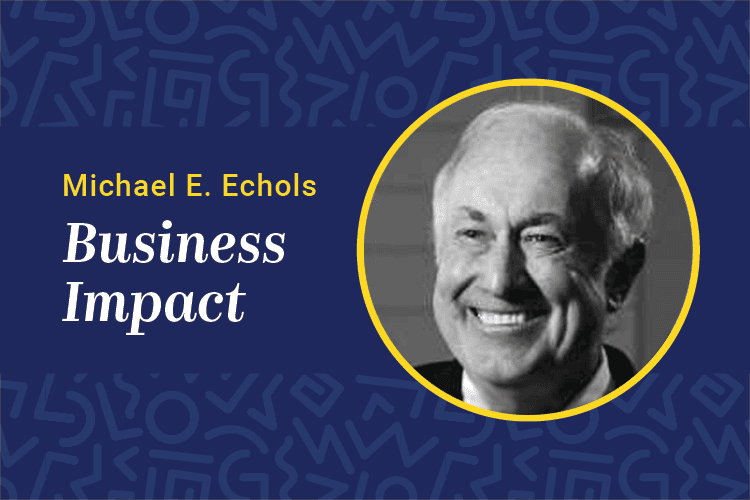“It was the best of times, it was the worst of times” — so it is with learning today. What can be done to increase the best while dialing down the worst? Companies have a stake in the results as well as an active role to play.
The $1.5 trillion in student debt represents both the best and the worst and serves as the foundation for this conversation. On the best side, it represents the willingness of young people to invest personal capital in themselves. The eventual potential cost to American taxpayers of $600 billion, however, is part of the worst.
How individual investments in education are being made is a real problem. The initial corporate impact of these personal decisions is the critical issue of finding and recruiting new workers with needed skills. And companies are not helping themselves.
The Debt Dilemma
Historically, investment in a college degree has been viewed as a matter of individual choice largely paid for by the individual. Governments were the primary source of public funds for these investments in the form of state-subsidized tuition at land grant schools and federal student loans. For a long time, the system worked. In the twentieth century, state budgets could subsidize tuition costs. These public subsidies made a college degree affordable for students and their families. Those days are over.
Demands on states to fund Medicaid, prisons and property tax relief have forced a significant reduction in the funds available to support higher education. Tax dollars allocated to higher education have declined as a percentage of state expenditures. At the same time, the published cost of tuition has increased at a rate well above the rate of inflation. This, combined with the decline in state tax dollar subsidies, has increased the tuition burden and shifted it to students and their families.
Simultaneously, personal income has been essentially flat. CNBC reports that 78 percent of full-time workers live paycheck to paycheck and 71 percent of all U.S. workers say they are now in debt. There is not enough money available to stay on the current path, no matter who pays.
Evidence of a breaking point is readily available. Only 25 percent of students with federal student loans are repaying the principle on their loans. Current trends indicate that approximately 40 percent of those with outstanding student loans are set to eventually default on those loan obligations, thus the shift of the $600 billion debt onto the backs of taxpayers. While all this is happening, companies are growing increasingly desperate for young educated individuals with the problem-solving and critical-thinking skills needed for the increasingly uncertain future. The implications definitely fall in the “worst of times” category.
Student debt is already having a direct negative impact across our society. Family formation, home purchases and retirement savings are all declining. Recent Federal Reserve research estimates that by 2014 student debt had reduced homeownership among young adults by 400,000 units. Student debt will further negatively impact family funds available for the education of children and grandchildren.
What This Means for Companies
There is a mismatch between the demand and supply of specific human capital skills. Our world is shifting from product and local to digital and global. This creates rapid growth in the demand for new skills. This is happening at a time when there are more unfilled positions than unemployed individuals in the United States. We need more young workers with critical-thinking and problem-solving skills — those same individuals who are increasingly burdened by personal debt in the form of student loans.
Shifting human capital investment increasingly onto individuals and their families is no longer a viable capitalization strategy. Investment funding requires improved productivity to be viable in the future. But all is not lost. One element of the best of times is the fact that there are enough jobs for those who wish to work. This is not an insignificant development.
In addition, more corporate capital is available than ever. There is record growth in company earnings and cash flow. There is ample corporate capital available for companies to invest for a very different future for their employees, stockholders and customers.
Virtually every company is looking for specific skills required to compete in this rapidly emerging global digital economy. And there are opportunities for these companies to differentiate themselves among those competing in the war for talent.
Recruiting is one area of opportunity. There are hundreds of thousands of talented, well-educated college graduates out there. Many are struggling to service their own student debt. Offering them financial help to service that debt in a hiring offer is a chance to become a highly differentiated employer.
But there is also significant opportunity in corporate learning. The needed shift is in the narrative of education as an employee benefit to education as a managed strategic imperative.
Targeted Human Capital Investment
Companies have stayed in an arms-length relationship with individuals’ education investment decisions. This includes choices about college attended, major, career and the means to finance these learning choices. This has preserved the principle of free choice in education. Placing the requirement for education investment on the state, the family and the individual relieves a company of the burden of putting its own funds toward human capital investment.
This is changing. A recently reported “best practice” was published in the Jan. 4 issue of The Wall Street Journal, in an article titled “Now Hiring, With Attractive New Perk: Free College Degree.”
I do think the “free college degree” bit is somewhat misleading, but the content makes up for the lameness of the title. The article describes an important development: In May 2018, Discover Financial announced it would pay tuition “to attend the University of Florida, Brandman University and Wilmington University and pursue one of seven online degrees — in business, cybersecurity, computer engineering or organizational management, all fields where the company has urgent hiring needs.” This represents targeted human capital investment of the first order. It is a model worth studying.
Discover has prequalified three specific universities and negotiated tuition costs. It further targets skill needs of the company by only paying for online degrees of strategic significance to the company. This improves quality and lowers tuition costs. It redefines education from an HR benefit to a strategic human capital investment. And Discover willingly shared the strategic initiative for all to see, a transparent move that can help us all.
Of course, students incurring substantial debt for majors in medieval studies or dance may have dismal prospects for repaying their student loans. And I’m not suggesting that anyone choosing to secure a degree in any area of their choice should be precluded from doing so. However, my recommendation is that the people who are making education-related choices have the potential to make better decisions with better information. And it is critical that such information be available before student debt is incurred, not after when job searches are taking place with degree in hand.
Another area where good information is extremely valuable sooner rather than later is in the area of actual tuition paid. Pricing incentives for colleges and universities are to position the institutions with high list tuition. An implicit assumption of American consumers is that if it costs more, it must be worth more. Low list tuition has the inverse implication: Low tuition must mean low value. This is not universally true. In fact, it is strongly in corporate interests for actual tuition to be lower, not higher. There are many good higher-education institutions that don’t have nosebleed list tuition prices.
Another pricing opportunity is in negotiations. In many ways colleges and universities follow “Trump: The Art of the Deal.” The list tuition price is the starting point for price negotiations. If the prospect will pay the full list price, so much the better for the college. Unfortunately, the least informed — especially those from families with little or no education — are the most vulnerable and the least likely to be able to gain access to the education they need to improve their lives. For first-hand evidence of this, visit tuitiontracker.org and enter any college you may want to explore. Look at the tuition graphs.
So, the opportunity is for prospective students to know what the real cost of tuition is at any and every college or university they are considering attending. The irony is that this data does exist and is readily accessible. The problem is that the average student and their family do not know where it is or how to access it.
Last, we want to explore future opportunity. In this area, the behavior of companies is key. In the name of competitive advantage, companies are reluctant to publicize their own future human capital needs. Beneath the surface the fear is that by revealing future skill needs, the transparency will alert competitors in the same markets of real needs and by doing so create competitive disadvantage. Forget it. The best competitors already have found out that marketing managers should be proficient in chat blasts, lookalike campaigns and keywords.
The ones who need and can productively use information about your company’s future human capital needs are the learners committing the $1.5 trillion and more to finance their own education. Knowing that your company will need experts in supply chain management earning a salary of $X per year could be very helpful to a talented individual considering life choices.
Good Investments Require Good Information
Who are the influencers in these personal learning investments of young people? We, as a society, have abdicated the giving of advice on colleges and majors to professionals ill-equipped to provide good advice. High school guidance counselors simply do not have the direct experience in careers in the rapidly changing world to give good career advice. Yet it is those guidance counselors along with college professors who are giving most of the direction on where the $1.5 trillion plus is being spent.
In the end, if we want to help individuals make better human capital investment decisions, we need to provide them with better information. Much of the data is available from highly reliable sources. The challenge is to get that information to the individuals making their own learning investment decisions before they incur massive student debt. Discover Financial is demonstrating a true best practice. Others should follow. Better human capital investment decisions help individuals, companies and our country.












